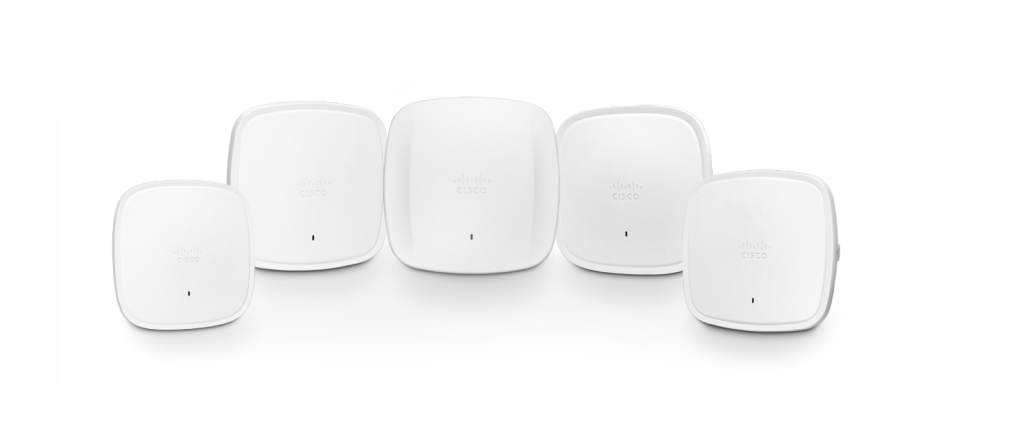Meraki started with a vision to make wireless networking simple and accessible. Early MR‑series access points enabled small offices and schools to deploy high‑quality Wi‑Fi without a complex setup. Its focus on cloud-based control, complete with zero-touch provisioning, reshaped expectations for network management. As customer needs grew, so did the Meraki product line.
Acquired by Cisco in 2012, Meraki expanded its horizons. It introduced MS‑series switches and MX security appliances, adding routing, firewalling, VPN, and SD‑WAN to its cloud ecosystem. More recently, the Cisco Meraki product line has evolved to meet the demands of enterprises, encompassing IoT support, outdoor ruggedization, AI-driven automation, and performance optimization. Every stage of growth kept simplicity at its core while layering in enterprise-grade capability.

Meraki’s wireless portfolio has evolved rapidly, shifting from legacy MR-series Wi-Fi 5 models to advanced Wi-Fi 6E and now Wi-Fi 7 access points under the CW series. The CW9166 and CW9176 models introduced tri-band functionality, 6 GHz support, and increased spatial stream capacity, optimizing the user experience in high-density environments.
The latest additions CW9176 and CW9178, push performance even further with full Wi-Fi 7 support, including Multi-Link Operation (MLO), 4K-QAM modulation, and improved uplink scheduling. These features translate into lower latency, increased bandwidth, and seamless roaming for devices across enterprise deployments.
Another major shift is the inclusion of dual 5 Gbps or 10 Gbps uplinks in CW models, addressing uplink bottlenecks and preparing sites for multi-gigabit clients. These access points are also designed with container support and built-in BLE, Thread, and UWB radios for IoT and smart building applications.
For businesses adopting hybrid work or deploying high-throughput applications like video conferencing and AR/VR, these Meraki access points redefine wireless performance expectations.
Cisco Meraki has also addressed a long-standing gap in industrial deployments with the release of the MS130R ruggedized switch. Designed for outdoor and harsh environments, the MS130R operates reliably in temperatures from -40°F to 158°F (-40°C to 70°C). Its IP30-rated enclosure protects against dust and debris, and its fanless design supports silent operation in sensitive or high-vibration locations.
Unlike other enterprise switches, the MS130R offers DIN-rail, wall, and rack mounting options with external AC or DC power support, making it suitable for transportation hubs, manufacturing sites, remote utilities, and smart city deployments.
Its PoE+ and PoE++ support (up to 240W total) allows direct powering of access points, security cameras, and sensors, simplifying infrastructure requirements in areas with limited electrical wiring. Combined with Meraki’s cloud dashboard, these switches offer centralized VLAN configuration, access policy enforcement, and remote troubleshooting, all without the need to deploy on-site IT staff.
The MS130R signals Meraki’s commitment to expanding its platform into OT and edge computing environments. Stratus Information Systems works closely with clients in logistics, public sector, and energy industries to deploy these and other Cisco Meraki switches where reliability and resilience are non-negotiable.

A major architectural leap occurred with the introduction of cloud-managed Catalyst switches powered by Meraki’s cloud-native IOS XE. This evolution merges Meraki’s intuitive dashboard and telemetry with the depth and feature richness of Catalyst’s enterprise switching hardware.
Previously, administrators had to choose between Catalyst’s advanced CLI and policy capabilities or Meraki’s cloud simplicity. Now, Meraki cloud management for Catalyst switches enables seamless control over Layer 2/3 routing, device access, ACLs, and analytics, all from a browser interface.
These switches also support hybrid cloud operations. IT teams can switch between CLI mode and Meraki cloud management as needed, giving experienced engineers the flexibility to configure complex behaviors while maintaining centralized control.
With support for NetFlow, Adaptive Policy, and TrustSec, the integration opens new doors for compliance-driven industries like finance, healthcare, and government. Organizations using existing Catalyst gear can now transition toward Meraki cloud operations without hardware swaps. Stratus Information Systems guides this migration, providing advisory, setup, and license provisioning support for hybrid and full-cloud deployments.
Cisco Meraki MV series has come a long way from basic cloud-connected security cameras. Recent developments position MV models as essential tools in the modern Meraki product line, offering not just surveillance but real-time intelligence at the edge.
MV cameras processors enable them to detect people, vehicles, and motion without relying on external servers. This edge-based design helps reduce bandwidth use while improving privacy and responsiveness. These improvements align with the broader goals of the Cisco Meraki product line: delivering cloud-managed simplicity paired with powerful local capabilities.
Recent models also support advanced analytics like occupancy trends, object tracking, and motion heat maps. These features are increasingly used outside of traditional security. Retail, education, and logistics teams now use MV data to optimize staffing, manage foot traffic, or monitor compliance zones, all within the Meraki dashboard.
As the Meraki product line continues to evolve, MV cameras are no longer standalone devices. They work seamlessly with Meraki sensors, switches, and MX appliances to form an integrated, responsive infrastructure. These developments reflect Cisco Meraki’s shift toward a more data-driven, automation-ready platform, one where video, sensors, and network policy all communicate in real time.
Meraki’s MT sensor line continues to grow, offering a powerful set of tools for facilities management and real-time physical security. The family includes sensors for temperature (MT10), humidity (MT14), water leaks (MT12), door access (MT20), and indoor air quality (MT40).
Recent updates have improved battery life, added USB-C support, and increased integration across the Meraki ecosystem. Sensors connect wirelessly to nearby MR access points or MV cameras via Bluetooth Low Energy (BLE), requiring no additional gateways.
The MT dashboard provides visual analytics, historical data, and threshold-based alerting. Businesses can detect HVAC failures, unauthorized entry, water leaks, or unsafe air quality instantly and trigger automated responses. For instance, opening a back door outside of operating hours can trigger an alert and link footage from nearby MV cameras.
These sensors have been deployed successfully in retail, education, and healthcare facilities, where proactive monitoring reduces insurance claims, equipment damage, and operational downtime. Stratus Information Systems configures sensor policies to meet customer-specific alert thresholds and response protocols, delivering full-stack monitoring without the need for additional cabling or software.
Cisco has strengthened its threat detection ecosystem by integrating Cisco XDR with Meraki MX security appliances. This pairing allows real-time threat telemetry from endpoints, email, DNS, and SaaS platforms to be matched with on-site network activity.
If Cisco XDR flags a high-risk user or IP, Meraki MX can enforce blocking rules at the network perimeter immediately. It also supports Umbrella-based DNS filtering, IPS, content filtering, and Layer 7 (L7) firewall rules, making it a critical component of a zero-trust architecture.
Meraki MX appliances now operate as both SD-WAN routers and full-featured security appliances, managed entirely through the Meraki dashboard. Remote users, branch offices, and headquarters all benefit from a uniform security posture enforced by policy templates.
Stratus Information Systems helps enterprises deploy Meraki MX with Secure SD-WAN, Umbrella, and XDR integration, delivering end-to-end visibility and rapid response capabilities.
In parallel with the evolution of hardware, the Meraki dashboard has undergone a steady expansion in features and intelligence. Administrators can now view connected clients, sensor alerts, camera footage, and switch port stats from a single UI.
The dashboard now includes customizable widgets, map-based views, and AI-powered suggestions for wireless troubleshooting. For multi-site operations, configuration templates and bulk actions significantly reduce administrative overhead.
APIs and webhooks allow Meraki data to be fed into third-party platforms like ServiceNow, Splunk, or Microsoft Sentinel, enabling custom analytics and SIEM integrations.
With new support for Adaptive Policy, organizations can enforce identity-based rules across switches and wireless access points, creating granular segmentation even in flat network topologies. These policies integrate with Cisco ISE or Microsoft Active Directory to tie network access directly to user roles.
Stratus Information Systems works with IT teams to design templates, role-based access policies, and real-time alerting that align with business rules and compliance requirements.
Cisco Meraki’s product line has evolved into a complete platform that supports modern digital transformation goals. Whether it’s Wi-Fi 7 access, rugged edge switching, secure SD-WAN, or physical sensor data collection, the Meraki ecosystem now extends from cloud to factory floor.
New features and form factors continue to be released, bringing Cisco Meraki into sectors previously dominated by legacy hardware. This evolution is a shift toward software-defined, cloud-native operations across networking, security, and environment monitoring.
For IT leaders, this means less time managing configurations and more time delivering strategic business value.
At Stratus Information Systems, we specialize in delivering Cisco Meraki solutions that are purpose-built for your operational needs. Whether you’re expanding a multi-site retail network, securing remote workers, or upgrading to Wi-Fi 7, we provide tailored guidance from planning to post-deployment.
Our team of certified engineers helps organizations evaluate new Meraki product lines, optimize licensing models, and maintain compliance while scaling infrastructure.
Contact us today to explore how your team can take advantage of the latest innovations across the Cisco Meraki product line.

Continue Reading...